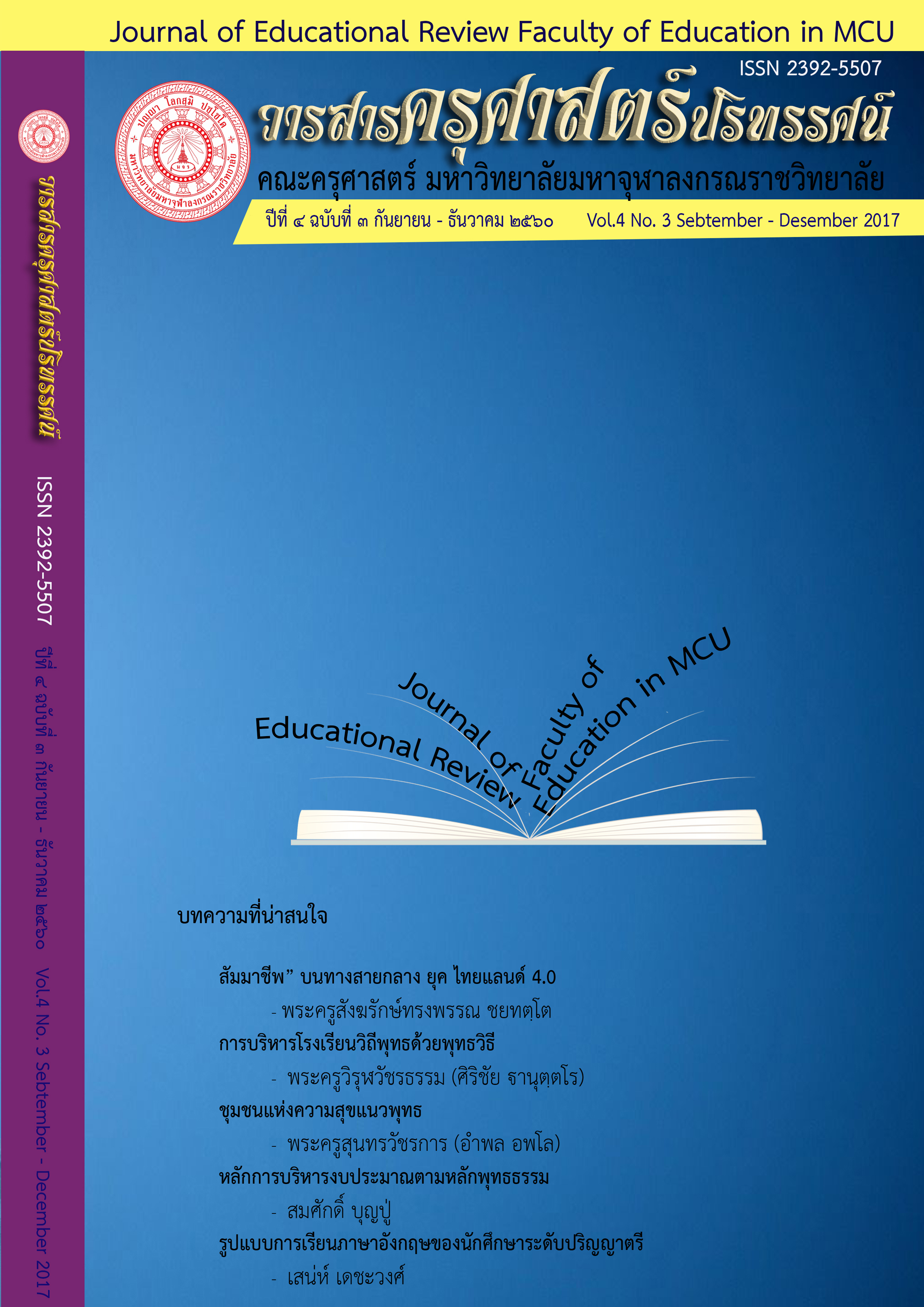English Language Learning Styles of Undergraduate Students
Main Article Content
Abstract
The objectives of the research entitled “English Language Learning Styles of Under-graduate Students” were to study the use of learning styles in English language learning, the difference in using learning styles in English language learning, and the relation of the use of learning styles and learning achievement of under-graduate students. The samples used in the study were the third year under-graduate students majoring in English of eight universities in Bangkok and its adjacent areas. The research instruments were 5-rating scale questionnaires adapted from the Grasha-Riechmann Student Learning Style Scales (GRSLSS) with reliability at 0.942 and English language learning interview form. The statistics used in data analysis consisted of percentage, mean, standard deviation, One-way ANOVA, and Chi-square Test.
The results of the study found that:
In total, students used learning styles in their English language learning at a moderate level. In details, students used Collaborative, Dependent, and Participant Learning Styles in their learning at a high level. Students in different genders used learning styles indifferently. The use of learning styles did not have a relation to learning achievement of students in general. With consideration on each learning style, the use of Independent and Participative Learning Styles had a relation to students’ learning achievement with a significantly statistic figure at 0.05. The students with a high level learning achievement preferred using Independent and Participative Learning Styles to those with moderate and low levels of learning achievement. The students with learning achievement in moderate and low levels preferred Participative Learning Style.
Article Details
ทัศนะและความคิดเห็นที่ปรากฏในบทความในวารสารฉบับนี้ถือเป็นความรับผิดชอบของผู้เขียนบทความนั้นเพียงผู้เดียว และไม่ถือเป็นทัศนะและความรับผิดชอบของกองบรรณาธิการ
กองบรรณาธิการขอสงวนสิทธิ์ในการคัดเลือกบทความลงตีพิมพ์และจะแจ้งให้เจ้าของบทความทราบหลังจากผู้ประเมินบทความตรวจอ่านบทความแล้ว
ต้นฉบับที่ได้รับการตีพิมพ์ในวารสารครุศาสตร์ปริทรรศน์ คณะครุศาสตร์ มหาวิทยาลัยมหาจุฬาลงกรณราชวิทยาลัย ถือเป็นกรรมสิทธิ์ของคณะครุศาสตร์ มหาวิทยาลัยมหาจุฬาลงกรณราชวิทยาลัย ห้ามนำข้อความทั้งหมดหรือบางส่วนไปพิมพ์ซ้ำ เว้นเสียแต่ว่าจะได้รับอนุญาตจากมหาวิทยาลัยฯ เป็นลายลักษณ์อักษร


